In the realm of large format printing, where visual impact reigns supreme, the cornerstone of print quality lies in the intricate interplay of image resolution. This crucial factor wields the power to determine the razor-sharp clarity that your poster will exude, shaping the very essence of its visual allure. As you embark on your expedition to unearth the epitome of large format printing excellence, the journey takes a pivotal turn as we delve into the intricacies of resolution optimization – a voyage that Platon Graphics understands intimately, as evidenced by their expertise showcased at https://platongraphics.com/large-format-printing/.
Understanding the nuanced connection between image resolution and print quality is essential to crafting a visually captivating poster that leaves an indelible mark. Each pixel, a minuscule yet indispensable building block, contributes to the intricate mosaic of your design. Platon Graphics, with their profound comprehension of these subtleties, harnesses the synergy between resolution and size, meticulously calibrating each element to create breathtaking large format prints that seize attention.
Resolution refers to the number of pixels contained within an image. The higher the resolution, the finer the details, resulting in a crisper final print. Low-resolution images might look fine on screens but can appear blurry when enlarged for posters.
To calculate the optimal resolution for your large format print, consider the viewing distance. If your poster will be seen from a distance, a lower resolution might suffice. However, if the print will be observed up close, a higher resolution is essential to maintain clarity.
Selecting the Right File Format
Choosing the appropriate file format is a crucial step in ensuring your large format print retains its visual integrity. Different formats offer varying levels of compression and compatibility, impacting the final output.
Common file formats for printing include JPEG, PNG, TIFF, and PDF. Each has its strengths and weaknesses. JPEG is suitable for photographs with a balance between quality and file size. PNG offers lossless compression, making it ideal for images with transparency. TIFF maintains high-quality but results in larger files.
When selecting a file format, consider factors such as the complexity of your design, the level of detail, and the intended use of the poster. Always aim to strike a balance between quality and file size to achieve the best possible outcome.
Color Management and Calibration
Accurate color representation is paramount in large format printing, ensuring your poster looks just as vibrant in print as it does on screen. Understanding color spaces, calibration, and profiles is key to achieving consistent and stunning results.
Color spaces like RGB (Red, Green, Blue) and CMYK (Cyan, Magenta, Yellow, Key) have different gamuts and are suited for various purposes. RGB is ideal for digital displays, while CMYK is designed for print. When working on your design, ensure you're using the appropriate color space.
Calibrating your monitor and printer ensures that the colors you see on screen closely match the final print. Utilize hardware calibration tools and regularly calibrate to maintain accuracy. Additionally, embedding color profiles in your files ensures proper translation from pixels to printed poster.
Image Scaling and Sizing
Resizing images for large format prints requires precision to avoid pixelation or loss of detail. Properly scaling your image enhances the visual impact of your poster, resulting in a polished and professional print.
When enlarging an image, use interpolation techniques like bicubic or Lanczos to maintain smooth edges and fine details. Avoid simply stretching the image, as this can lead to distortion. Instead, adjust the resolution and dimensions while preserving the aspect ratio.
Keep in mind the final size of your print and the viewing distance. Higher resolution is essential for large prints that will be observed up close, while a lower resolution may suffice for posters viewed from a distance.
Choosing the Ideal Printing Material
The choice of printing material significantly impacts the appearance and feel of your large format print. Different materials offer distinct textures, durability, and visual effects, allowing you to tailor your poster to your creative vision.
Common printing materials include glossy paper, matte paper, canvas, vinyl, and fabric. Glossy paper enhances color vibrancy and contrast, while matte paper reduces glare. Canvas adds texture and depth, while vinyl offers weather resistance for outdoor use.
Consider the aesthetic you wish to achieve and the environment in which the poster will be displayed. A glossy finish might be ideal for a vibrant artwork, while a matte finish could suit a vintage design. The choice of material is a powerful creative decision.
Paper Finishes and Texture
Choosing the right paper finish and texture adds a tactile dimension to your large format print, influencing both visual and tactile perceptions. Each paper finish contributes to the mood and style of your poster.
Common paper finishes include glossy, matte, satin, and textured. Glossy finishes provide a reflective surface, enhancing color vibrancy. Matte finishes reduce glare and offer a subtle, refined look. Satin finishes strike a balance between gloss and matte. Textured paper adds depth and character to your print.
Consider the subject matter and overall theme of your design when selecting a paper finish. A glossy finish might amplify the brilliance of a vibrant photograph, while a matte finish could complement an elegant illustration.
Printers and Inks
The choice of printer and inks plays a pivotal role in realizing the true potential of your large format print. Understanding the types of printers and inks available empowers you to make informed decisions.
Laser and inkjet printers are commonly used for large format printing. Laser printers offer speed and precision, while inkjet printers excel in color accuracy and versatility. Pigment-based inks deliver durability and fade resistance, while dye-based inks offer vibrant colors.
Consider your specific needs and budget when selecting a printer and ink type. Consult with professionals or conduct thorough research to determine the best fit for your creative goals.
Preparing Files for Printing
Before sending your design for printing, it's crucial to ensure your files are properly prepared for the best results. Taking care of these details minimizes the risk of unexpected issues during the printing process.
Start by cleaning up your image. Remove any artifacts, dust spots, or imperfections that might detract from the final print. Crop and adjust the composition if necessary, keeping in mind the poster's dimensions and aspect ratio.
Embed color profiles and necessary data in your files to ensure consistent color reproduction. This information helps the printer interpret and reproduce colors accurately, maintaining the integrity of your design.
Finally, create print-ready files by adjusting settings like resolution, color mode (CMYK), and bleed. Double-check that all fonts are embedded, and save your files in the appropriate format (such as PDF) to avoid compatibility issues.
Printing and Proofing
Printing a test proof is a crucial step in the large format printing process. It allows you to preview how your design will appear on the chosen material and make any necessary adjustments before the final print.
When sending your design to the printer, ensure you've set the correct parameters, such as paper size, orientation, and color settings. Work closely with the printing service to ensure they understand your vision and requirements.
Review the test proof carefully, paying attention to color accuracy, sharpness, and overall visual impact. Make adjustments if needed, and request another proof if necessary. Once you're satisfied with the proof, give the green light for the final print.
Size and Placement Considerations
The size of your large format print has a significant impact on its visual impact and effectiveness. Consider the intended viewing distance, the surrounding environment, and the message you want to convey.
If your poster will be displayed in a spacious area with ample viewing distance, you can opt for a larger size that captures attention from afar. For more intimate spaces, a moderately sized print might create a stronger connection with viewers.
Placement also plays a role in the poster's impact. Consider the wall or space where it will be displayed. Will it be framed, mounted, or hung as a standalone piece? The placement influences how the poster interacts with its surroundings and the overall aesthetic it creates.




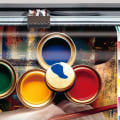
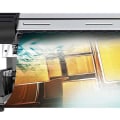
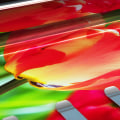
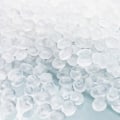
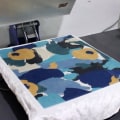
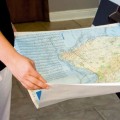
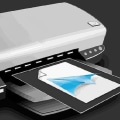
Leave Message